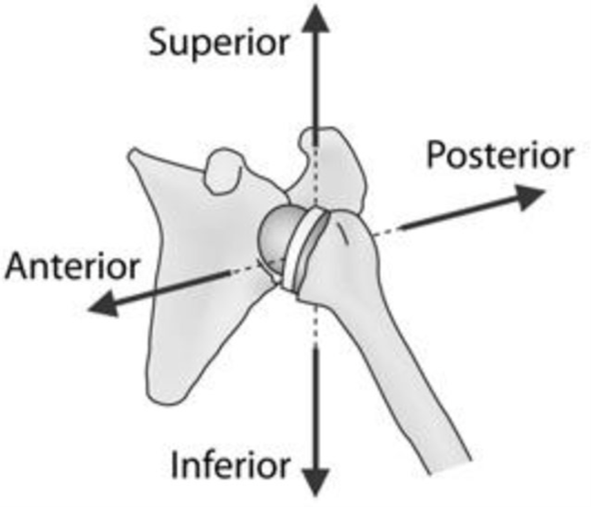Unstable shoulders – in more than one direction?!
The shoulder is a complex joint with a large range of motion in many directions. The shoulder is typically thought of as the ball and socket joint between the humerus and the shoulder blade. Consideration also needs to be given to the movement that occurs between the collarbone on the shoulder blade and the shoulder blade on the rib cage.
 The shoulder relies on a mixture of both passive and active components to create joint stability. Passive components include ligaments and the joint capsule. Active components are the muscles and tendons surrounding it, such as your rotator cuff.
The shoulder relies on a mixture of both passive and active components to create joint stability. Passive components include ligaments and the joint capsule. Active components are the muscles and tendons surrounding it, such as your rotator cuff.
Shoulder instability occurs when the control of the ball and socket is reduced, and as a result causes symptoms such as pain, weakness, or instability/dislocations. Typically, this is in one direction and usually because of a traumatic injury. Think a shoulder dislocation in football. But what about if there is instability in more than one direction? This is where multidirectional instability (MDI) comes in.
What is it?
MDI is defined as having instability in two or more directions. This is a mixture of inferior instability +/- anterior or posterior instability. An important point here is that there are symptoms in those different directions. The cause of MDI is quite complex, but there are a few contributing factors. These include having a background of joint hypermobility, repeated overhead work or sport, changes in the anatomy around the shoulder, and changes in the timing of the muscles around your shoulder and shoulder blade.
Who gets it?
As mentioned before there are a few key populations who may experience MDI. These include people with joint hypermobility disorders, people with high levels of work overhead (throwers, swimmers), and potentially people who have had a traumatic shoulder dislocation which has since worsened.
What can I do if I have it?
The good news is that MDI is very treatable. After a thorough assessment from your physiotherapist a rehabilitation program can be created that is tailored to each unique presentation. This looks at improving the stability of your shoulder in the directions that are impacted by working at the timing and coordination of the muscles around your shoulder and shoulder blade through different movements. This program will take between 3 and 6 months to get great outcomes!
So, if you experience shoulder instability, or have MDI then get in contact with our team of physiotherapists who can help guide you through the rehabilitation pathway back to function. Quick and easy online bookings available or call us on 07 5500 6470

































